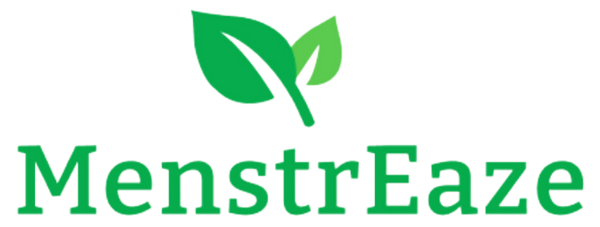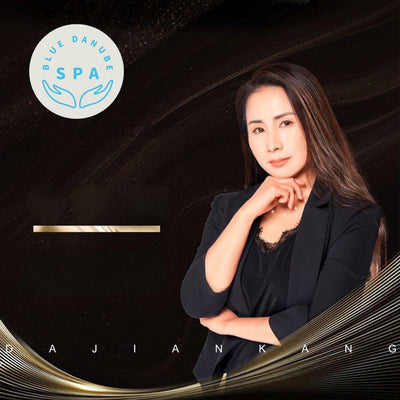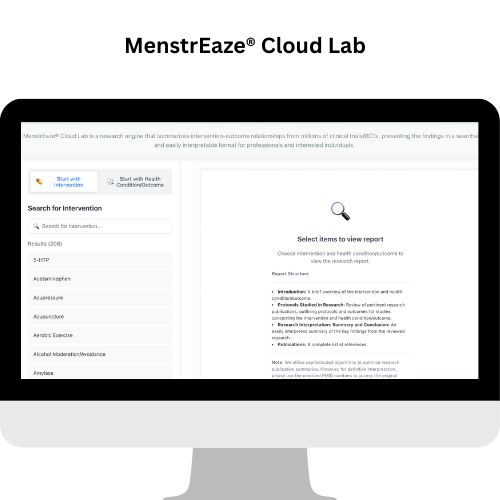Menopause marks a significant transition in a woman's life, typically occurring between the ages of 40 and 50, and officially recognized after 12 consecutive months without a menstrual period. This natural biological process, known as the climacteric period, brings about a myriad of physiological and psychological changes due to fluctuating hormone levels, particularly estrogen. While menopause is a natural phase, the symptoms associated with it—such as hot flashes, night sweats, mood swings, sleep disturbances, anxiety, and changes in body image—can profoundly impact overall well-being and quality of life.
Navigating these changes often prompts women to seek complementary therapies that can alleviate symptoms and enhance comfort without relying solely on pharmaceutical interventions. Among the diverse range of non-pharmacological approaches, craniofacial massage has emerged as an area of growing interest. This specialized form of massage, focusing on the head, face, and neck, is gaining recognition for its potential to support women through the menopausal transition by addressing some of its most challenging aspects. This guide delves into the evidence behind craniofacial massage, exploring how it can be a valuable addition to a holistic menopause management strategy for women seeking relief and improved quality of life.
Understanding Craniofacial Massage: A Gentle Approach to Relief
Craniofacial massage is a therapeutic technique that involves gentle, rhythmic strokes and pressure applied to the scalp, face, neck, and sometimes the upper shoulders. The philosophy behind this massage modality centers on the belief that tension held in these areas can contribute to a variety of physical and emotional discomforts. The craniofacial region is densely populated with nerve endings, blood vessels, and muscles, making it a highly sensitive and responsive area for therapeutic intervention. By releasing tension in these areas, craniofacial massage aims to promote relaxation, improve circulation, and stimulate the parasympathetic nervous system, which is responsible for the body's "rest and digest" state.
Unlike more vigorous forms of massage, craniofacial massage typically uses light to moderate pressure, making it a soothing and non-invasive option. Techniques can include effleurage (gliding strokes), petrissage (kneading), friction, and gentle stretching of the facial and neck muscles. The focus is often on specific points such as the temples, jawline, forehead, and the base of the skull, where stress and tension commonly accumulate. This targeted approach is designed to not only relax the superficial muscles but also to influence deeper tissues and the nervous system, thereby fostering a sense of calm and well-being.
The Science Behind Craniofacial Massage for Menopausal Women
The efficacy of various physiotherapy modalities in addressing menopausal symptoms, particularly depression and insomnia, has been the subject of systematic reviews. While some interventions like reflexology, yoga, walking, and aromatherapy massage have shown significant positive impacts on decreasing insomnia and depression in menopausal women, the evidence for craniofacial massage specifically on improving sleep quality and depression has been noted as insufficient in some systematic reviews [1]. This highlights the complex nature of research and the need for more targeted studies to fully understand the specific benefits of each modality.
However, more focused research has indeed explored the direct effects of therapeutic craniofacial massage on menopausal women. A randomized controlled clinical trial involving 50 menopausal participants (aged 45-65 years) specifically investigated the impact of craniofacial massage on quality of life, mental health, and menopausal symptoms, as well as body image perception [2]. This study found that cranial massage techniques had a large, positive effect on these criteria [2]. The researchers concluded that the craniofacial massage protocol, when applied to the craniofacial sphere, serves as a complementary and valid therapy option for clinicians in treating various symptoms experienced during the climacteric period [2]. This suggests that while broader reviews might find insufficient evidence for specific symptoms like insomnia and depression, dedicated studies on craniofacial massage indicate its potential for broader well-being benefits.
Key Benefits of Craniofacial Massage for Women in Menopause
Based on available research and the principles of massage therapy, craniofacial massage offers several potential benefits that can significantly support women during menopause:
Enhancing Quality of Life and Mental Health
One of the most compelling findings regarding craniofacial massage is its positive impact on overall quality of life and mental health in menopausal women [2]. Menopause can be accompanied by increased anxiety, irritability, and mood fluctuations, which can severely diminish one's sense of well-being. The calming effects of craniofacial massage can help to alleviate these emotional burdens. By promoting deep relaxation, it can reduce stress hormone levels and stimulate the release of endorphins, leading to an improved mood and a greater sense of inner peace. This direct influence on mental well-being is crucial for navigating the often challenging emotional landscape of menopause.
Supporting Emotional Balance
Related to its effects on mental health, craniofacial massage for emotional balance is a significant benefit. The practice encourages a state of mindfulness and presence, allowing individuals to disconnect from daily stressors and reconnect with their bodies. This can be particularly beneficial for women experiencing the emotional turbulence of menopause. By reducing tension in the face and head, which are often areas where emotional stress manifests physically, the massage can help to release pent-up emotions and foster a more balanced emotional state. The soothing touch and focused attention can create a safe space for emotional processing, contributing to greater resilience and equilibrium.
Addressing Menopausal Symptoms (General)
While specific evidence for sleep and depression might be limited in some systematic reviews, the randomized controlled trial indicated a positive effect on general menopausal symptoms [2]. This could encompass a range of discomforts beyond just sleep and mood, such as headaches, facial tension, and even indirectly, hot flashes through stress reduction. The overall relaxation induced by craniofacial massage can help to calm the nervous system, potentially reducing the frequency or intensity of stress-related menopausal symptoms.
Improving Body Image Perception
Menopause often brings about changes in body composition, skin elasticity, and overall appearance, which can negatively impact a woman's body image. The clinical trial on craniofacial massage specifically noted its beneficial effects on body image perception [2]. This might be due to several factors: the improved circulation can give the face a more refreshed appearance, the reduction of facial tension can soften features, and the overall feeling of being cared for and relaxed can foster a more positive self-perception. Engaging in self-care practices like craniofacial massage can empower women to embrace and appreciate their bodies during this transformative phase.
Alleviating Headaches and Facial Tension
Many women experience tension headaches, jaw pain (TMJ issues), or general facial tightness during menopause, often exacerbated by stress and hormonal fluctuations. Craniofacial massage directly targets these areas, releasing muscle knots and promoting blood flow. This can provide significant relief from chronic headaches and reduce the discomfort associated with clenching or grinding teeth, common manifestations of stress.
Promoting Relaxation and Stress Reduction
At its core, craniofacial massage is deeply relaxing. The gentle touch and focused attention on the head and face can induce a meditative state, lowering heart rate and blood pressure. For women grappling with the increased stress and anxiety often associated with menopause, this deep relaxation is invaluable. Regular sessions can help to reset the nervous system, making it more resilient to daily stressors and promoting an overall sense of calm.
Integrating Craniofacial Massage into Your Menopause Journey
Incorporating craniofacial massage into your routine can be done through professional treatments or self-massage techniques. Both approaches offer unique benefits and can contribute to your overall well-being during menopause.
Professional Craniofacial Massage
Seeking a qualified massage therapist who specializes in craniofacial work can provide a deeply therapeutic experience. A professional will have an in-depth understanding of anatomy and specific techniques to address your individual needs. They can identify areas of significant tension and apply precise pressure to maximize relief and relaxation. Professional sessions can be a wonderful way to fully surrender to the healing touch without the need for self-application, offering a profound sense of calm and rejuvenation.
Self-Craniofacial Massage Techniques
For daily support and convenience, self-craniofacial massage is an accessible and empowering practice. Here are some simple techniques you can incorporate into your routine:
- Forehead Smoothing: Place your fingertips in the center of your forehead and gently smooth outwards towards your temples. Repeat several times.
- Temple Circles: Use your fingertips to make small, gentle circles on your temples. This can be very effective for headache relief.
- Eyebrow Lift: Place your thumbs above your inner eyebrows and gently press upwards and outwards along the brow bone.
- Jaw Release: Use your knuckles or fingertips to massage the muscles around your jawline, moving in small circles. You can also gently press upwards under your cheekbones.
- Scalp Massage: Use your fingertips to gently rub your scalp in small circular motions, covering the entire head. This stimulates circulation and can be incredibly relaxing.
- Neck and Shoulder Gentle Kneading: Use your hands to gently knead the muscles at the base of your skull and along your neck and upper shoulders, where tension often accumulates.
These techniques can be performed for 5-10 minutes daily, perhaps as part of your morning or evening routine. You can use a light facial oil or moisturizer to reduce friction and enhance the experience.
Important Considerations for Craniofacial Massage
- Consult Your Healthcare Provider: Before starting any new complementary therapy, especially if you have underlying health conditions, it's always wise to consult with your doctor. While craniofacial massage is generally safe, certain conditions (e.g., recent head injuries, skin infections, certain neurological conditions) might be contraindications.
- Listen to Your Body: Pay attention to how your body responds to the massage. It should feel relaxing and soothing, not painful. Adjust pressure as needed.
- Consistency is Key: Like many therapeutic practices, the benefits of craniofacial massage are often cumulative. Regular, consistent application, whether through professional sessions or self-massage, will yield the best results.
- Complementary, Not a Cure: Craniofacial massage is a complementary therapy. It should be viewed as one component of a broader, holistic approach to managing menopause, which may also include diet, exercise, stress management, and conventional medical treatments as advised by your doctor.
Conclusion: A Holistic Approach to Menopause Support
Menopause is a unique and personal journey for every woman, often presenting a complex array of symptoms that impact daily life. While comprehensive systematic reviews suggest that more research is needed to establish definitive evidence for craniofacial massage's direct impact on specific symptoms like insomnia and depression [1], a dedicated randomized controlled trial has shown significant positive effects on overall quality of life, mental health, general menopausal symptoms, and body image perception [2]. This highlights its potential as a valuable complementary therapy.
Craniofacial massage offers a gentle, non-invasive way to promote relaxation, reduce tension, and enhance emotional balance, contributing to a more positive experience during this transitional phase. Whether through the skilled hands of a professional or through empowering self-massage techniques, integrating craniofacial massage for women into their menopause management plan can foster a deeper connection with their bodies, alleviate discomfort, and support overall well-being. By embracing such evidence-informed complementary therapies, women can navigate menopause with greater comfort, resilience, and an improved quality of life.







